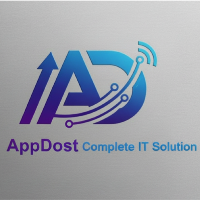As a Full Stack Developer, you will design, develop, and maintain both front-end and back-end web applications. This article explains core responsibilities, the technical stack, development practices, testing, security, deployment platforms, and collaboration workflows you will use — including performance optimization, documentation, and staying up-to-date with modern development practices to ensure reliable, maintainable applications.
Core Responsibilities and Front-End / Back-End Technologies
You are responsible for building dynamic user interfaces and robust server-side logic while ensuring seamless data flow between client and server. The work divides into front-end and back-end responsibilities that integrate closely:
- Front-end development: Develop and maintain user-facing features using HTML, CSS, JavaScript, and modern front-end frameworks such as React.js or Next.js. Ensure technical feasibility and performance of UI/UX designs across platforms and devices, and implement responsive design principles and cross-browser compatibility.
- Back-end development: Design, build, and manage server-side logic and APIs using technologies like Node.js, Express.js, or PHP. Implement RESTful APIs and work with JSON for web services integration to enable seamless client-server communication.
- Databases and data flow: Work with relational and document databases such as MySQL, PostgreSQL, or MongoDB. Ensure reliable data flow between the client and server and choose appropriate database interactions according to application needs.
- Reusable code and libraries: Build reusable code and libraries for both front-end and back-end components to increase development efficiency and maintain consistent patterns across the application.
Quality, Security, Deployment, and Collaboration
Beyond coding, your role emphasizes reliability, security, collaboration, and deployment. These practices ensure the application performs well in production and that teams deliver features consistently.
- Performance, scalability, and optimization: Optimize applications for maximum speed and scalability. Debug, test, and resolve technical issues across the full stack to maintain high performance.
- Security and access control: Implement authentication and authorization using secure coding practices and mechanisms such as JWT and OAuth. Protect data and user privacy throughout the application.
- Testing and reliability: Conduct unit testing, integration testing, and performance testing to ensure the application is reliable. Participate in code reviews to maintain high code quality standards and share constructive feedback with peers.
- Deployment and DevOps basics: Deploy and manage applications on cloud platforms such as AWS, Vercel, or Netlify. Be familiar with CI/CD pipelines and DevOps basics to streamline releases and reduce deployment friction.
- Tools, documentation, and version control: Use version control systems like Git with GitHub or GitLab. Write and maintain comprehensive documentation for code, APIs, and development workflows. Use API documentation and testing tools such as Postman and Swagger.
- Collaboration and continuous learning: Collaborate closely with UI/UX designers, product managers, and back-end engineers to deliver seamless user experiences. Maintain strong communication and problem-solving skills, and stay up-to-date with emerging technologies, frameworks, and best practices in full-stack development.
Conclusion: As a Full Stack Developer you combine front-end and back-end expertise—building dynamic UIs with HTML, CSS, JavaScript, and React.js/Next.js while implementing server-side logic with Node.js/Express.js or PHP and managing databases like MySQL, MongoDB, or PostgreSQL. Emphasize performance, security, testing, documentation, and collaboration, deploy via cloud platforms, and continue learning to deliver scalable, reliable applications.


